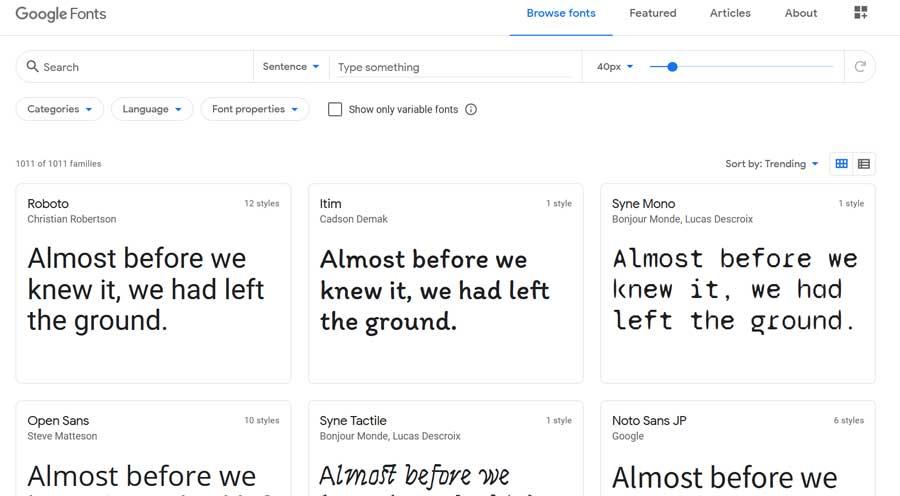
If that’s still confusing, think about it as a family: even if you and your siblings share a surname (typeface), you’re still different in your first names, appearance, and so on (font). Helvetica Bold 24 point is technically a different font, even though both fonts are part of the Helvetica typeface. For example, Helvetica is a typeface, and Helvetica Thin 40 point is a font. If you’re not sure of the difference, the term ‘typeface’ is general, while ‘font’ is more specific. We can be a very picky bunch sometimes, but I decided it was more important to help as many people as possible rather than be totally precise. Typographers and designers reading this might be annoyed that I’m using the word ‘font’ when I should be using the term ‘typeface’.
GIMP FONTS FREE
The entire collection is free to anyone signed up for one of the many Creative Cloud subscription plans, including the ultra-affordable Photography plan that includes Photoshop, Lightroom, and Lightroom Classic, along with 20GB of cloud storage for just $9.99 per month. All the fonts are licensed for personal and commercial use, which is essential for serious work. The organization system is simple, but it would be nice if the Styles section allowed you to combine multiple tags.Īdobe provides a beautiful collection of typefaces from the leading foundries, with an excellent search tool and large customizable previews to help you narrow down your choices.

Be sure to read those licenses and make sure your usage is approved!įontSpace claims to have over 77000 free fonts in its directory, and there certainly seem to be more than you could ever use in a lifetime. The only thing to keep in mind is that most of the fonts on DaFont are only licensed for personal use, which means you can use them for your own personal projects but not for any commercial purpose whatsoever. Here are a few of the best sources of fonts for GIMP:ĭaFont is one of the oldest and largest free font sources on the internet, and it has a font for literally any occasion you can imagine (and probably quite a few that you can’t.) The interface is a bit hard to navigate, but there are decent search tools available to help you find what you need. You’re not the only one who loves to collect fonts – there are tons of websites that are dedicated to nothing but fonts.

You can either type in the path to your own font folder if you’ve got it memorized already or select the small folder icon beside it (highlighted in red above) to browse for your font folder’s location. It’s easy to set up, but take care not to add too many fonts at once or you might slow GIMP’s load time.

GIMP FONTS FULL
If you’ve already got a folder full of fonts and you don’t want to move them around, you can tell GIMP where to find them and it will scan and load them in their current location.
GIMP FONTS WINDOWS 10
The Font Folder preferences in GIMP on Windows 10 showing default locations The right pane will show you the current custom locations GIMP will search for fonts, and let you add new ones. On the left pane, scroll down to find the Folders section and expand it by clicking the small + icon beside it, then select Fonts. Open GIMP, and open the Preferences dialog. The locations will depend on your OS, but you can always find them the same way.
GIMP FONTS INSTALL
Luckily, there are other font folders you can use to install your fonts to use in GIMP. There are a few situations where it’s not possible to edit the default system folders, such as on a public or shared computer. When you install your fonts there, they can be accessed by all the programs on your computer, which usually makes things a whole lot easier. Most of the time, it’s better to use your operating system’s default fonts folder. If you’re not sure where to get new fonts, I’ve put together a few of the best options below. To install them for everyone, copy your OpenType OTF files into /usr/share/fonts/opentype/ and TrueType TTF files into the /usr/share/fonts/truetype/ folder. To install for your own account, simply create a new folder named ‘.fonts’ in your home directory and copy all your font files there. These instructions may vary a bit depending on which flavor of Linux you’re running, but covering all the variations would probably be an entire article all by itself! Linux users are probably used to a bit of hardship during any setup process, but they also get a relatively easy ride here.

Even though it shows less info, the macOS font preview still manages to look much nicer


 0 kommentar(er)
0 kommentar(er)
